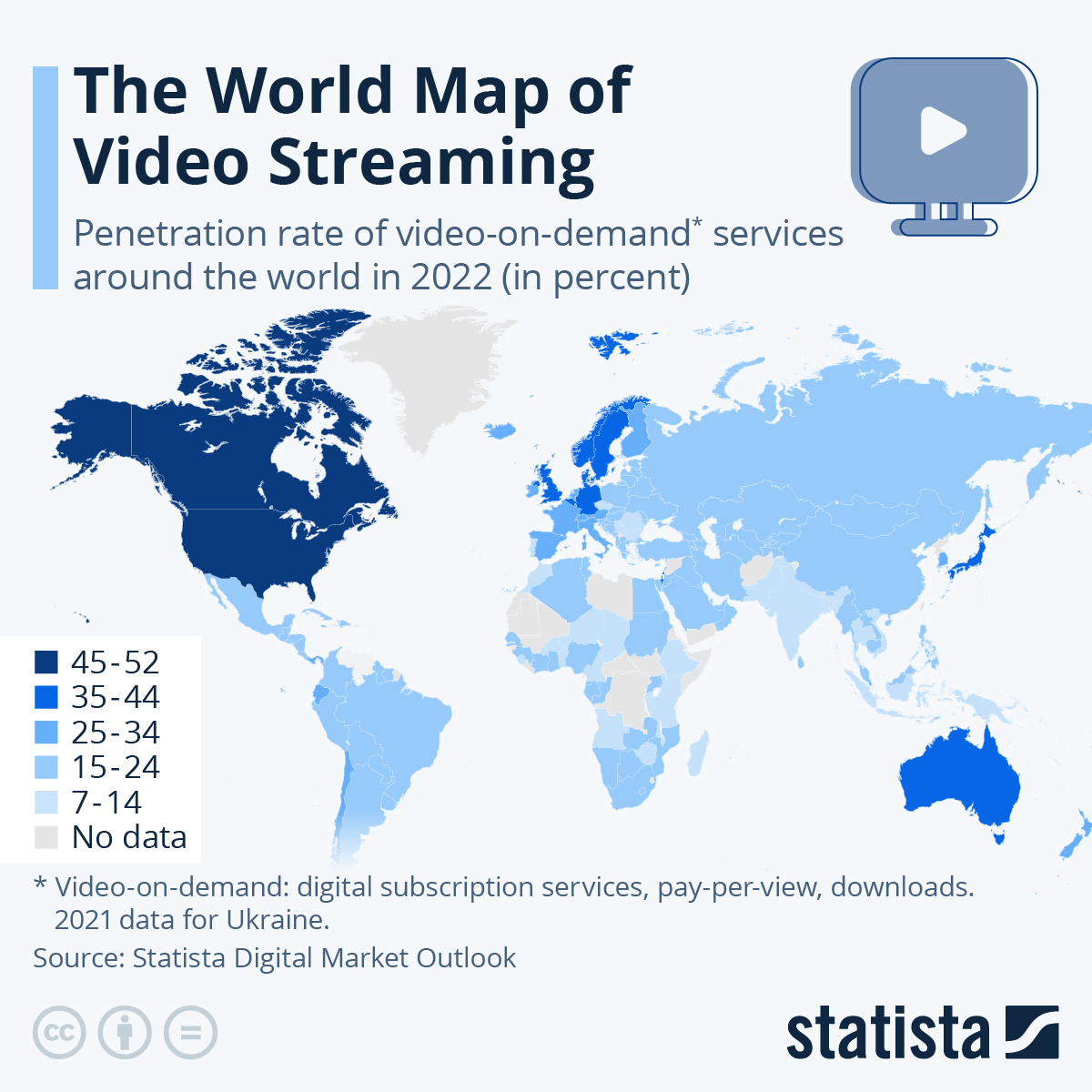
READ MORE: New World of Streaming Video Has HUGE Implications for the Content Industry (Parks Associates)
With more content available now than arguably at any time before, the focus has been on streaming platforms and on consumers, but the impact on the content creator hasn’t been discussed.
Yet the growth of online video and connected devices has had a profound effect on the way content creators operate.
Some of these trends are contradictory. For example, the increase in distribution choices has made it easier for content creators to find an outlet for publishing their work but this is not as straightforward as it seems.
“A major hurdle for content creators is finding the right distributor to maximize revenue and audience for their brand of content,” writes Elizabeth Parks, analyst at Parks Associates. “Sifting through the burgeoning market of distributors is a considerable challenge for content creators, but a critical component of success in today’s crowded landscape.”
A Map of Worldwide SVOD Penetration Rates
Facing a rising number of competitors, Netflix has found it difficult to grab more share in the streaming marketplace and recorded its first decline in its subscriber base since the first quarter of 2022. However, worldwide growth of SVOD services rose roughly 20% in 2022, according to market research & analysis consultancy Statistia.
As Statista senor data analyst Katharina Buchholz explains, the map below shows “the most promising markets for chasing video-on-demand users are now South Asia, Latin America and Africa, where Disney+ has arrived in several countries (including South Africa) in 2022. While the market is expanding more slowly in North America, where video-on-demand has reached approximately 50% of the population, there is still some more room to grow in Europe, where this figure varies from 14% in Bulgaria to 42% in the United Kingdom.”

READ MORE: The World Map of Video Streaming (Statista)
Another double-edged sword pivots around quality of content. On the one hand, it is considered a good thing that high quality equipment (cameras, editing gear, lighting) is available far more affordably than ever for creators to reach niche or global audiences online. On the other hand, a great deal of user-generated content remains unprofessional and unwatchable. There are huge opportunities for self-distribution on video sharing platforms like YouTube, Twitch and TikTok, but not everyone can be a Logan Paul and make millions of dollars monetizing this work.
Certainly, the idea that we are currently experiencing or may even have peaked “the golden age of television,” is being bandied about. Consumers have never had it so good. But binge-watching has denied content creators the opportunity to extend the conversation and debate between episodes.
CRUSHING IT IN THE CREATOR ECONOMY:
The cultural impact a creator has is already surpassing that of traditional media, but there’s still a stark imbalance of power between proprietary platforms and the creators who use them. Discover what it takes to stay ahead of the game with these fresh insights hand-picked from the NAB Amplify archives:
- The Developer’s Role in Building the Creator Economy Is More Important Than You Think
- How Social Platforms Are Attempting to Co-Opt the Creator Economy
- Now There’s a Creator Economy for Enterprise
- The Creator Economy Is in Crisis. Now Let’s Fix It. | Source: Li Jin
- Is the Creator Economy Really a Democratic Utopia Realized?
Parks suggests that content, therefore, has a shorter shelf life. “Fans of particular content may not watch the content at the same time or at the same pace, making the shelf life for conversation much shorter,” she says.
Then again, OTT services tend to keep a lot of content active in their libraries. This, says Parks, gives content creators and platforms a chance to monetize the long-tail long after the hype of release has passed.
With more content going direct to digital, rather than being distributed via traditional outlets, “this alters the way that content creators consider their position in the ecosystem as well as the way they monetize their content,” Parks says.
The insatiable demand for content continues to drive content creators to search for efficiencies and that means looking to technology to enhance the creative process.
“A major hurdle for content creators is finding the right distributor to maximize revenue and audience for their brand of content. Sifting through the burgeoning market of distributors is a considerable challenge for content creators, but a critical component of success in today’s crowded landscape.”
— Elizabeth Parks, Parks Associates
Remote production that cuts travel cost and time out of the equation and squeezes editorial/post closer to production is a key trend here from sports to feature film. Virtual Production is a another model, which makes it easier to create high quality assets without the unpredictability of shooting on location.
Parks picks out the advance of process automation in which automation techniques might clip, edit, and push footage to various teams as soon as it is ready. This ensures that content is processed in the fastest and most efficient way, limiting the potential for human error.
A related technology being widely adopted throughout almost every step of content creation is the tagging of assets with AI. Algorithms for object recognition, speech recognition, and other categorization tools streamline the process of tagging and categorizing content with metadata.
Additional disruption of the content creation process is on the horizon. The legacy studio model is slowly morphing but is propped up by massive content spending by Netflix, Amazon, Warner Bros. and Disney.
Parks says, “It is possible that when these companies reach a greater scale with content creation, or their content spending slows, content creators employing a technologically forward-looking process will have a more prominent place in the ecosystem.”

